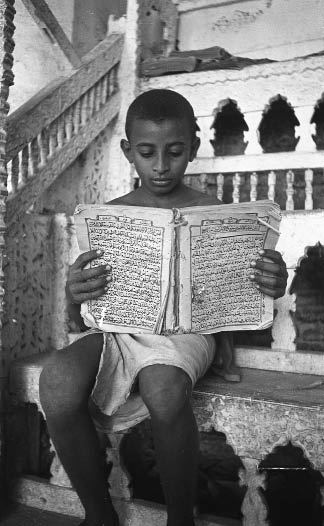‘Choose your companions’, says an early Arab proverb, ‘thereafter your road.’ In the 1970s, Hugh Leach’s companion on his travels to Northern Yemen was Freya Stark, and she has become his companion again, in this affectionate hommage of photographs and short, scholarly texts.
‘Choose your companions’, says an early Arab proverb, ‘thereafter your road.’ In the 1970s, Hugh Leach’s companion on his travels to Northern Yemen was Freya Stark, and she has become his companion again, in this affectionate hommage of photographs and short, scholarly texts. Stark herself is all the more present in that she appears from time to time among the monuments, with her small stout figure, beaky nose and sensible shoes, smiling out from under wide-brimmed hats.
In the early 1970s, long before he met Stark and while he was serving in the British Western Aden Protectorate, Leach made a short tour of the Hadhramaut. Looking at Stark’s book about the area, published by John Murray in 1938, he was struck by the simplicity and clarity of the photographs, the uncompromising borderless photo- gravure images on mushroom-coloured paper, taken with the very screw-thread Leica he favoured himself.
On his way home he stopped in to call on her in Asolo, in Northern Italy, and when he told her that his next posting was to be to Sana’a, she proposed visiting him, so that they could travel together. The fact that she was 83 had not dimmed her longing for exploration.
Leach, an Arabist, soldier and diplomat, who endearingly lists his interests as vintage cars, early Christianity, crystal sets and circuses, seems to have been her perfect companion — no easy feat given her exigeant nature.
The idea was to replicate a journey she had made in 1940, when, taking with her a driver, a cook and an escort of soldiers, and travelling sometimes by camel, she had persuaded her boss at the Ministry of Information in Aden, Stewart Perowne— whom she later married — to let her visit the harems of northern Yemen in order to counter Axis propaganda. She took with her a projector and a number of films, of which the most popular was Everyday Life in Edinburgh.
After they returned from their expedition, Leach and Stark discussed collaborating on a book of their joint photographs, taken on their idential Leicas, but the project never got off the ground. Stark died in 1993, at the age of 100.
Seen in the Yemen, the title they had originally planned to use, is in many ways the book they failed to produce, only the photographs are all Leach’s own. Like Stark, Leach sticks to black and white borderless photographs, with captions on facing pages. They show the familiar tall, hewn stone or brickwork buildings, with their flat roofs and symetrical stucco decorations, as well as immense rocky landscapes, most often with people in the foreground, like Stark’s own. Her photographs are now in the Middle East archives of St Antony’s College, Oxford. The word ‘others’ in the subtitle is slightly misleading, for though Violet Dickson and Wilfred Thesiger are both mentioned, they play the smallest of walk-on parts.
The lost world the photographs evoke is indeed remarkable, of a time and a place uncluttered by advertising hoardings, satellite dishes, parking lots and tourist buses. But, for the most part taken little more than 30 years ago, they are striking for what they say about the modern world, the speed of change, their very air of timelessness and serenity jarringly at odds with the frenzy of the political upheaval coming out of Yemen today.






Comments